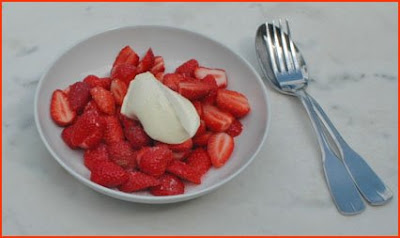People imagine that the great island continent of Australia is far away from everywhere. In fact, as the following map indicates, the northern tip of Queensland is only a few hundred kilometers from two foreign lands: Papua New Guinea and the Indonesian province of Papua.

A few weeks ago, five Australians decided that it would be fun to take off from Australia—more precisely, from Queensland's Horn Island in the Torres Strait—in a light plane and drop in at Mopah airport. They thought naively that, once they touched down on Indonesian soil, it would be easy for them to obtain tourist visas enabling them to do a bit of sightseeing before flying back home. Well, the latest news is that they've been fined several thousand dollars, and they're still in jail. In this context, my sister
Susan Skyvington has been interviewed in
The Australian:
Susan Skyvington, whose son Saul Dalton was detained in Papua for six months in 1999, said the similarities with her son's case were chilling.
"In the first few days he was under house arrest in a hotel and (we were told) we were going to be able to get him out in a few days ... when the documents were sorted out.
"Then they were saying he was not going to be released, they were going to put him through a trial and he was moved to a military police outstation in the jungle."
Mr Dalton, then 25, had gone to East Timor to hand out how-to-vote cards during the referendum on independence from Jakarta. Indonesian-backed militias were intimidating independence supporters at the time and took a dim view of foreigners participating in the political process.
Ms Skyvington said that when violence erupted her son boarded a ferry to Papua to escape, and was told he could sort out his documentation when he arrived. In Papua, he was put to trial and given 10 months' jail, which was reduced for good behaviour. He ended up spending six months in detention.
Ms Skyvington said that her son had never fully recovered from the experience, and now suffered from post-traumatic stress disorder.
Another affair. In the above map, I've highlighted a magnificent place in northern Queensland called
Cooktown, at the mouth of the Endeavour River, where the navigator
James Cook berthed his vessel for a few weeks in 1770, to carry out repairs and replenish their stocks of water and food.

Today, tourists are warned that it's crocodile country, and that they must be constantly "crocwise".
 [Click the banner to visit the Cooktown website, which lets you download a
[Click the banner to visit the Cooktown website, which lets you download a
page of survival instructions that should help you to avoid getting eaten alive.]A few days ago, a 62-year-old Brisbane man who had been camping there with his wife strolled down to the edge of the water to retrieve his crab pots before driving off home. His wife never saw him again, but police discovered the man's camera on the river bank, along with his wristwatch and a sandal. There were track marks of a crocodile, and the line to the crab pots was cut.

Another local animal, the kangaroo, is in the front-page news. An Australian specialist on climate change,
Ross Garnaut, has just suggested that people should give up eating beef and lamb and change to kangaroo meat, since our marsupials have the advantage of farting in a less noxious fashion than conventional livestock.

When I observe the quantity and variety of Oriental herbs, spices and Thai fish sauce that are recommended by chefs, to make kangaroo dishes tender and tasty, I'm wary about the possibility of a new source of urban flatulence pollution. Before implementing a change to local mammal meat, Aussie authorities might carry out comparative methane-rejection tests on humans who eat spicy kangaroo dishes as opposed to the ordinary farting of old-fashioned beef eaters.
 That's to say, I never bake bread without a massive proportion of walnuts. Besides, it's a peaceful activity to sit down in the sun and crack open walnuts with a hammer.
That's to say, I never bake bread without a massive proportion of walnuts. Besides, it's a peaceful activity to sit down in the sun and crack open walnuts with a hammer. The prawns and herbs look like this when they come out of the mixer:
The prawns and herbs look like this when they come out of the mixer: Then I shape it up into a rectangle and cover it in bread crumbs:
Then I shape it up into a rectangle and cover it in bread crumbs: I then leave it overnight in the refrigerator, and cook the rissoles the following day.
I then leave it overnight in the refrigerator, and cook the rissoles the following day. The cherry season is in full swing at Gamone. Sophia has developed a taste for this fruit, which she picks up beneath the trees. Usually, she doesn't even bother to spit the seeds out.
The cherry season is in full swing at Gamone. Sophia has developed a taste for this fruit, which she picks up beneath the trees. Usually, she doesn't even bother to spit the seeds out. My strawberry patch is full of fruit. Curiously, Sophia is not at all attracted to them. I like to eat them straight after they're picked, at garden temperature, with sugar, a little lemon juice and sour cream.
My strawberry patch is full of fruit. Curiously, Sophia is not at all attracted to them. I like to eat them straight after they're picked, at garden temperature, with sugar, a little lemon juice and sour cream. You might have guessed that I eat well here at Gamone. And so does Sophia.
You might have guessed that I eat well here at Gamone. And so does Sophia.
































